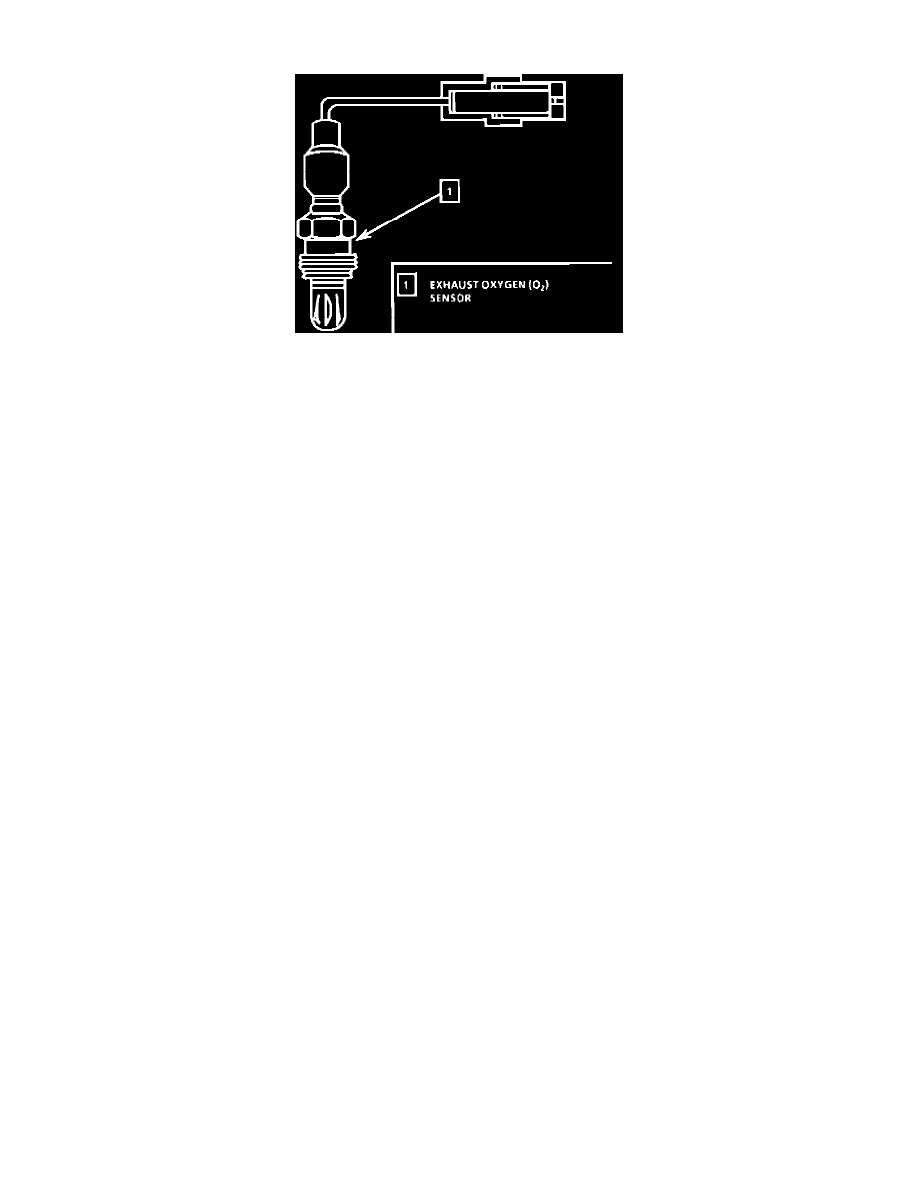Lumina APV V6-3800 3.8L (1994)

Oxygen Sensor: Service and Repair
Exhaust Oxygen Sensor (02)
CAUTION:
^
The Oxygen sensor uses a permanently attached pigtail and connector. This pigtail should not be removed from the oxygen sensor. Damage or
removal of the pigtail or connector could affect proper operation of the oxygen sensor.
^
Take care when handling the oxygen sensor. The in-line electrical connector and louvered end must be kept free of grease, dirt or other
contaminants. Also, avoid using cleaning solvents of any type. DO NOT drop or roughly handle the oxygen sensor.
^
The following procedure should be performed with engine temperature over 120°F otherwise the oxygen sensor may be difficult to remove.
REMOVE OR DISCONNECT:
1.
Electrical connector.
2.
Carefully remove the oxygen sensor.
INSTALL OR CONNECT:
NOTE: A special anti-seize compound is used on the oxygen sensor threads. The compound consists of a liquid graphite and glass beads. The graphite
will burn away, but the glass beads will remain, making the sensor easier to remove.
New or service sensors will already have the compound applied to the threads. If a sensor is removed from an engine, and, if for any reason it is to be
reinstalled, the threads must have anti-seize compound applied before reinstallation.
1.
Coat the threads of the oxygen sensor with anti-seize compound P/N 5613695, or equivalent if necessary.
2.
Oxygen sensor in the engine, and tighten to 41 Nm (30 lb.ft).
3.
Connect the electrical connector.
